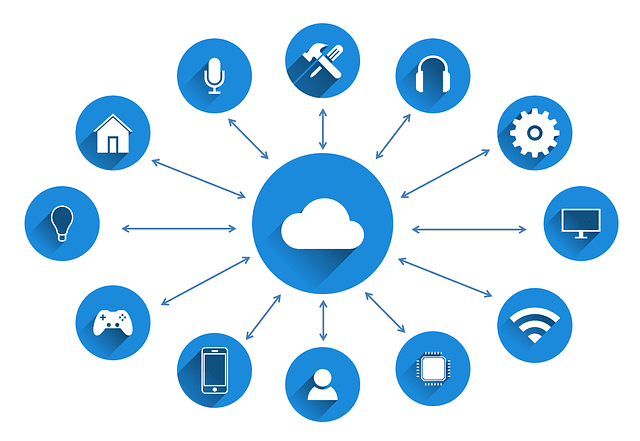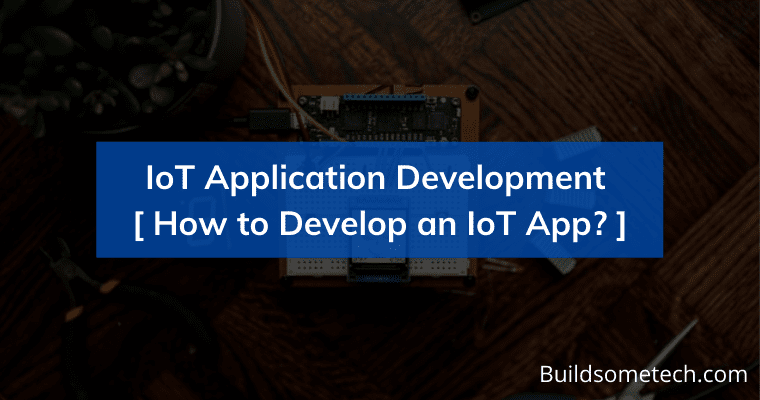IoT (Internet of Things) is an imminent technology. In recent times, plenty of sectors are relying more on internet-connected devices.
There is a growth of IoT technology and the development of more devices, sensors, and gateways. So, there is an increasing demand for efficient apps and software that can fully integrate with the IoT system.
Basically, the IoT application development intends to infer the incoming data, scrutinize it, and then present it in a user-friendly approach. But the increasing demand for IoT proficiency has made it more difficult for many organizations to seal the skills gap and recruit outside experts.
And the corresponding demand also resulted in an increase in the implementation of no-code as well as low-code development platforms for the IoT apps. With the help of IoT app development, a lot of organizations chose to develop an IoT app internally.
Now let’s go through the in-depth details of the Internet of Things and how to create an IoT app with this ultimate guide.
So without further ado, let’s get started…
Table of Contents
What is the Internet of Things (IoT)?

The Internet of Things (IoT) represents any equipment or device which connects to the Internet with the help of embedded software. The implementation of IoT technology to a device makes it more intelligent. The reason is it facilitates digital data communication with other systems and devices, in real-time.
Consequently, it leads to an opportunity to incorporate valuable features to devices as well as optimize operations and processes. In other words, IoT relates to the interlinking of appliances, digital devices, machines, people, and other objects with each other through wireless networks.
What is IoT Application Development?

IoT Application Development is the procedure of developing IoT applications as well as products that can be remotely controlled. This process can prove useful to supervise the environment or condition of the connected product through external data sources and sensors. To fulfill the direct requirements of any business, Custom IoT Development is used.
Basically in this type of development, cloud-based software as a service ( SaaS ) apps are used. They present a bridge between the Internet and IoT devices. Thus, they facilitate the assimilation, inspection, and analysis of data produced by the hardware.
How to Develop an Internet of Things (IoT) Application?

For the development of an IoT application, there are 4 key aspects Hardware, Networks, Software, and Apps which play a vital role. Talking about the process, the analog signals captured by sensors are sent to the cloud or specific interface for processing. The software then processes the data after it reaches the cloud. Subsequently, an individual uses the interface of a particular IoT app to receive, communicate and customize data.
Moreover, there are 5 major IoT app development platforms:-
- IBM Watson
- Amazon Web Services
- Google Cloud IoT
- Azure IoT Suite
- Cisco IoT Platform
Now let’s get thorough details of how to develop an IoT application by understanding the anatomy of the system, factors to consider during the development process, and stages.
Anatomy Of An IoT System
Anatomy or Working of an IoT system and how all components are involved in IoT solutions and the way they are interconnected. Below we have given a quick overview of all 4 key components which are the basics of any standard IoT system.
- Sensors and Devices (Hardware): Sensors amass relevant data like audio or video or temperature. Typically, a device contains a group of sensors that assimilate and share data from the neighboring environment.
- Cloud Connectivity (Networks): After the data has been gathered, the subsequent step is to share the same with the cloud infrastructure and save it. For this, the IoT system utilizes a data transport network like cellular, Wi-Fi, satellite, WAN (wide-area networks) etc.
- Data Processing (Software): After the data approaches the cloud, it is being processed through a software program. The purpose behind this is to collect the data, examine it, and present it in a practical format.
- User Interface (App): After the data processing through the analytic engine gets completed, it is synchronized with some type of user interface. Typically, the mobile app is preferred with a user dashboard that enables people to view the data. Moreover, the app can inform people when certain data is amassed.
Now let’s move to the factors to consider…
Factors to Consider During IoT Application Development

In the above section, we discussed the anatomy of an IoT system but here we will talk about the key factors that should be considered and are responsible for the success of IoT applications.
1. Plug Security Gaps
One of the key issues faced in IoT systems is that these systems are deficient in familiar security protocols. Due to the deficiency of security, the IoT systems are vulnerable to hacking and cyber attacks like DDoS attacks. It is known that the Dyn cyberattacks of 2016 negatively influenced IoT technology like webcams, printers, baby monitors, and many other devices with malware. The most effective way to avoid cybercriminals and hackers from abusing the inbuilt vulnerabilities of IoT is to create apps that close the gaps and defend the transfer of data.
Also Read: 8 Biggest Cloud Security Breaches Of All Time
2. AI Data Analysis
The fundamental workflow of an IoT system involves five steps, namely, create, communicate, aggregate, analyze, and act. Firstly, the sensors establish data communication via a network that is amassed in the cloud. The subsequent stage is data analysis that is carried out by an IoT app. It can be improved with AI and Machine Learning technology.
3. Opportunities For Business
The investment in custom IoT application development gives rise to various business opportunities. And here is the list of these opportunities:-
- Productivity optimization
- Automation of business services and processes
- Allow more productive remote working
- Enhanced data sharing across businesses
- Quick response to changing circumstances
- Facilitates cost reductions
4. Creating a Continuous User Experience
With the development of a custom IoT app, you can adopt the agile method of Continuous User Experience (CUE). Continuous User Experience (CUE) entails obtaining information and data from anyone that uses your app. Moreover, you can scrutinize all the relevant data and precisely know how the user interrelates with the data. Consequently, it improves your app depending on user queries. This also leads to making it more user-friendly. The app optimization performed this way enables you to create customer loyalty and beat your competitors.
Till now we have discussed the IoT platforms, anatomy, and factors to consider. Now let’s move to the development stages.
IoT Application Development Stages

The process of creating an app for its integration with an IoT ecosystem demands meticulous planning and design. And for the successful creation of app through IoT system, it is advisable to consider the 5 Software Development Life Cycle (SDLC) Stages discussed below:-
1. Planning the Framework of Your App
Firstly, you need to work on planning the overall framework of the IoT app. You need to determine what features would be required, the way UX would work, the way the app would interface with the system software of the device, and the proper way to perform data transfer between the IoT app and devices.
2. Designing the App Based on User Journeys
The next step is designing the app. You have to plan for imminent security systems, overloads, and finally design the app as per the user’s requisites. To precisely define the user roadmap, it is vital to carry out some research. So, you can converse with the customers or end-users and discern what they expect from the app. The vital aspect to take into account when it comes to interfaces development is user-friendliness.
3. Develop, Implement, and Deploy the App
Now the next stage involves building an IoT app. This stage focuses on the actual project implementation in which all the concepts of app architecture, as well as its designs, are used. In this stage, there will be the development of a functional app and obtaining the precise interface having all the practical menus, forms, and lists.
4. Testing and Integration
After the app is deployed, it must be thoroughly tested to ascertain that all the services and features function as anticipated. There must be no glitches or bugs. Moreover, the user experience must be satisfying. In this stage, different cases are employed and test data are analyzed to ascertain that all user road maps perform well.
5. Maintenance and Improvement
The maintenance phase in the process of an IoT application is the eventual stage of SDLC. This stage works on testing and accommodating the software, technical specification, and system hardware to enhance overall performance.
Now let’s move to the important part which is use cases…
Use Cases of IoT Apps and Technology

Basically, this section highlights key business areas that can make the most of IoT technology and applications that are helping users.
- Manufacturing: This business area is one of the most fascinating areas of IoT technology. Typically, manufacturing companies utilize plenty of devices, machinery, and sensors to make sure the IoT systems are an impeccable fit for their business processes and operations.
- Transportation & Logistics: Punctuality and efficiency are the prominent concerns of the logistics sector and transport services. Typically, IoT systems assist you to track and supervise data which enables logistics companies to enhance their operations.
- Smart Homes: Smart home tools and appliances are an enormous growth market when it comes to consumer goods. Most of the universal elements of a home could be optimized IoT technology. For example, IoT systems can optimize heating, lighting, security, water, resource consumption, etc.
- Healthcare: With the advancement of healthcare and biomedicine technology, IoT systems would be widespread in homes, clinics, hospitals, and other healthcare services.
- Retail: In the world of retail, background processes like quality control and supply chain management can be improved with the use of IoT apps and technology.
Some FAQs
What is IoT application development?
IoT application development is the process of developing IoT apps using data & analytics that can be controlled remotely and customer experience can be improved.
What are applications IoT?
IoT applications are those apps that run on IoT devices or intelligence devices and help them to control those devices remotely.
What are 5 examples of IoT applications?
Here are 5 examples of IoT applications:-
1. Manufacturing Products.
2. Smart homes and cities.
3. Transportation & logistics.
4. Agricultural and commercial use.
5. Healthcare management.
How do I make an app for IoT?
If you want to create an app for IoT, then you need to look for all these stages:-
1. Select a platform to build.
2. Select the hardware.
3. List all use cases that are possible.
4. Your app should be light & fast.
5. High-end security for users & data.
That’s it for now…
Conclusion
With augmented growth and escalating trend for IoT solutions, IoT app development will certainly play a key role in business in the coming years. Data transfer between devices and the Internet is streamlined with the help of application development. Considering the factors and stages discussed above, you can follow the implementation process and can easily develop an IoT-based application.
Feel free to share your thoughts via comments and also don’t forget to share this post if you liked it.

